#opal replaced fossil
Explore tagged Tumblr posts
Text

Pair of Opal Replaced Belemnite (Peratobelus) Fossils - Australia
#belemnite#peratobelus#australia#opal#opalized#opal replaced fossil#fossil#fossils#prehistoric#paleoblr#aes#png#transparent#paleontology#fav
46 notes
·
View notes
Text
I’m back from my rock show! I got some Cool Rocks!
First, the agates.
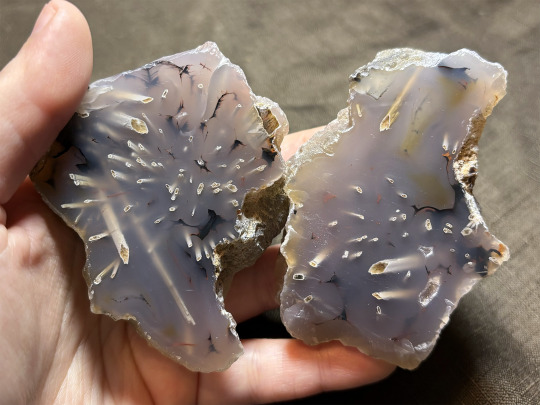
Another Turkish stick agate to join my collection! I can't get enough of this stuff. These form as pseudomorphs of selenite. A bunch of criss-crossing selenite crystals grow inside an empty pocket in the rock, and then the space around them fills in with agate. Eventually, the selenite crystals dissolve, and the hollows they leave behind are also filled with agate, preserving a record of their shapes!
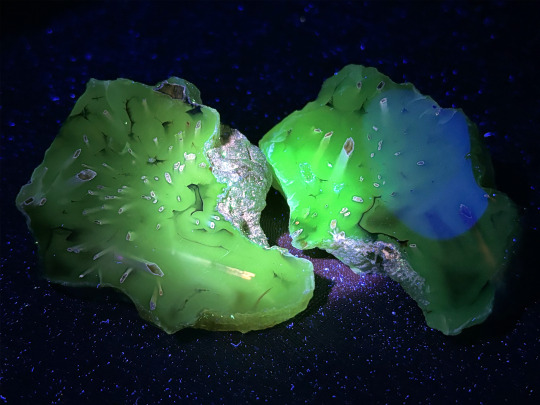
Bonus! This pair has a nice green fluorescence.

Here is another Turkish agate. (Almost all of today's agates are from Turkey; Turkey produces some beautiful agate specimens.) This one has a really interesting pattern to its banding.

I actually picked this one out for its fluorescence, which is a stunning bright green.
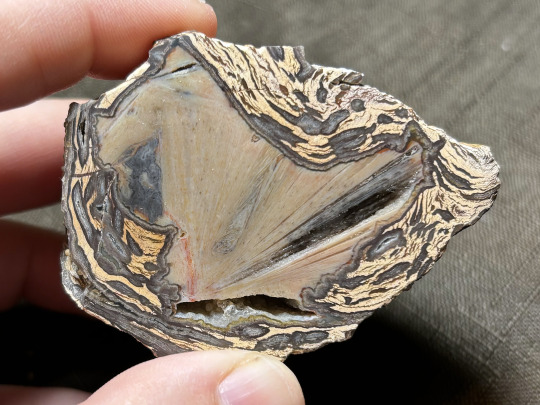
Also from Turkey! Growing inside a super cool crust of volcanic rhyolite, this agate is called sagenite. Sagenite agate has a fibrous appearance because it is a pseudomorph of a fibrous zeolite mineral.


The last two from Turkey: a pretty red specimen with a sparkly central vug, and a weirdo with squiggles of yellow. What’s going on with that guy?

This one is from China! The red and orange agates from this locale are called "Fighting Blood" agate. I already have a Fighting Blood in my collection, but I thought this one was neat because its vug is full of amethyst!
Here are some things which are not agate!
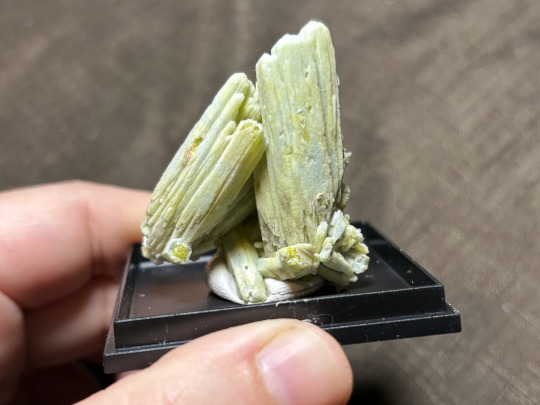
This one is a lead mineral called plumbogummite! Specifically, these crystals are a pseudomorph of another lead mineral called pyromorphite. Over time, the lime green pyromorphite crystals were slowly replaced by the tealy plumbogummite. In a few of the broken crystals, you can still see a green pyromorphite core!
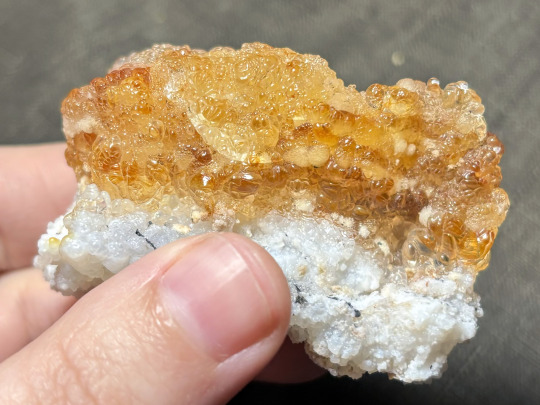
Hyalite opal! This rock has been on my bucket list, I am so excited. This form of opal is known for its water-clear, jelly-like globule formations. Though typically a colorless mineral, this specimen is tinted yellow due to iron staining. It’s also a mineral famous for its bright fluorescence… but this specimen’s glow is utterly unimpressive. :c I will be on the lookout for a more glowy specimen at future shows. Honestly, I’m just happy to finally own some at all!
This year, I also got some high-end mineral specimens! Take a look at these beauties.
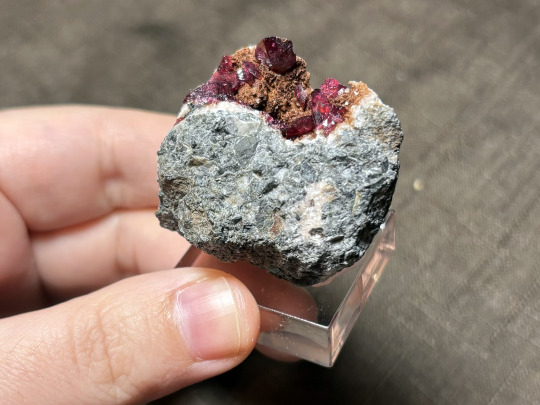
Roselite! This rare, toxic mineral is full of arsenic. If I ate it I would probably die! Roselite’s deep red color comes from the cobalt in its chemical structure, and makes it highly sought after by collectors. This specimen is showing off a well defined lenticular crystal habit! Again, I cannot overstress how rare this stuff is. I spent… an inadvisable amount of money on it.

Oh, the best and most sparkly boy. This is wulfenite! I have wanted a piece in my collection for so long, and I’ve been waiting for just the right specimen to come along. It's a lead mineral, and it forms the coolest square, tabular crystals! This mineral is extremely brittle, which makes large, intact crystals of it very hard to find. But check out the huge tabular crystal on the right side of this specimen, it’s bigger than my thumbnail!!
And finally, I could not resist buying something silly.
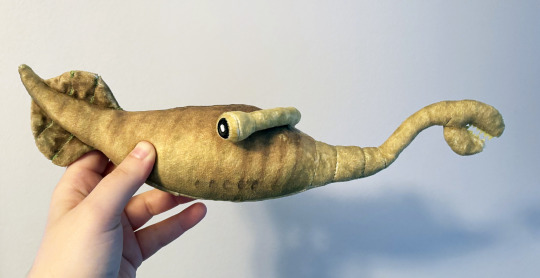
This is Tully. He's a plush Tully Monster, which is my state fossil!
556 notes
·
View notes
Text


Kai if he was cool
This may ruffle some feathers but, I’ve always had the feeling that Kai was a little under-designed, he’s always felt like he was missing something to me.
Like there was some detail his design was supposed to have that we never got.
Ive also always wanted him to be spookier because I love bones so I decided to take a crack at my own design for him.
I wanted him to appear withered, like even in the mortal realm he looks undead and wrong. Something between The Lich and his original design.
I know it’s a kinda taboo in china to show skeletons and zombies in kids media but GODAMMIT I needed to see his skull. Sometimes if a fossil is preserved under the right conditions it’s organic structures will be replaced with opal, so I wanted to do the same thing with jade.
The centuries he’s spent in the spirit realm has mummified his skin and turned his bones to jade.
#kung fu panda#fanart#anthro#dreamworks#digital illustration#kung fu panda 4#Kung Fu panda 3#kung fu panda lore#kung fu panda fanart#kai kung fu panda#redesign
245 notes
·
View notes
Text
Dream but he has little golden fracture marks all over his body from when he was turned to stone by his brother, the postitive energy that makes up his magic and soul having solidified into something akin to gold. Inspired by LavenderTowne's idea to stylize character flaws, Kintsugi, and the premise that it's not what doesn't kill you that makes you stronger, but instead the act of healing.
Also, this dream iteration's bones are made of quartz petrified wood, as his sudden "Fossilization", despite no longer keeping him frozen in time, replaced all of the organic material in his wooden bones with semi-translucent quartz and opal, with traces of feldspar and pyrite.
Both Dream and Nightmare started out with applewood bones, which were grown from their mother's branches, stripped of the bark, and quickly turned into their skeletal bodies before the wood dried out.
While they were still young, the wood dried much slower than normal wood and remained pliable, which allowed the twins to sustain little-to-no injuries before they gained full co-ordination. Once Juveniles and before the incident, their bones had fully dried and their flexibility became solely dependent on their magic muscular system like typical of a skeleton monster.
When Nightmare died and became the sludgy thing we know of today, it had consequences on his wooden bones. Like the original comic, Night's bones shattered into hundreds of shards that are held together by the liquid corruption he mostly consists of now.
The wood of his bones however, has rotten and stained, as the corruption acted much like a bog. His bones are very similarly stained and dense like bog-wood now, and have somewhat reformed back into his skeletal frame underneith his oozing exterior, but he would still die if someone managed to separate his bones from the corruption.

also here's doodle I made whilst writing this headcanon lol
I made dream's spines rounded bc it reminds me of dinosaur spines in kids cartoons, bc he's old as one lmao.
I also made his spiral-thing-that-replaces-what-would-be-the-ear-canal-because-i-dunno-how-2-draw-that spikey like that because it looks like a star or sun :3
When I draw nightmare his spiral thing is gonna be a non-spiral crescent thingey bc it'll look like a moon :3
#undertale#undertale aus#undertale sans#dream sans#nightmare sans#apple twins undertale#mowmowmowmow#digital art#my art :3#matter undermind
11 notes
·
View notes
Text
FOSSIL FRIDAY
Today we will talk about Petrified Wood!
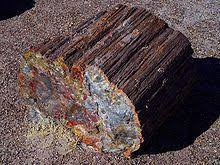
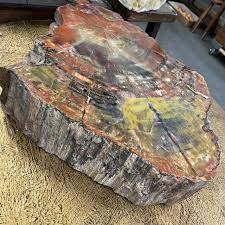
One of the most common fossils, petrified wood is is tree or tree-like wood that has either been fossilized through replacement or permineralization. Usually, the organic material is replicated by silica (quartz or it's microcrystalline forms opal or chalcedony).
Petrified wood forms when woody plants are buried in saturated sediments with dissolved minerals in solution. The lack of oxygen slows decay and allows fossilization to occur.

Below are petrified wood and cycad specimens I have collected over the years from various localities I have worked at. All come from Late Jurassic sites.
The first is from the Salt Wash Member of the Morrison Formation in northwestern Colorado. It has been replaced by silica, most likely the microcrystalline quartz form, chalcedony.

The second is from the same location and has definitely been replaced by chalcedony. In this case, it looks to be the "flint" variety.
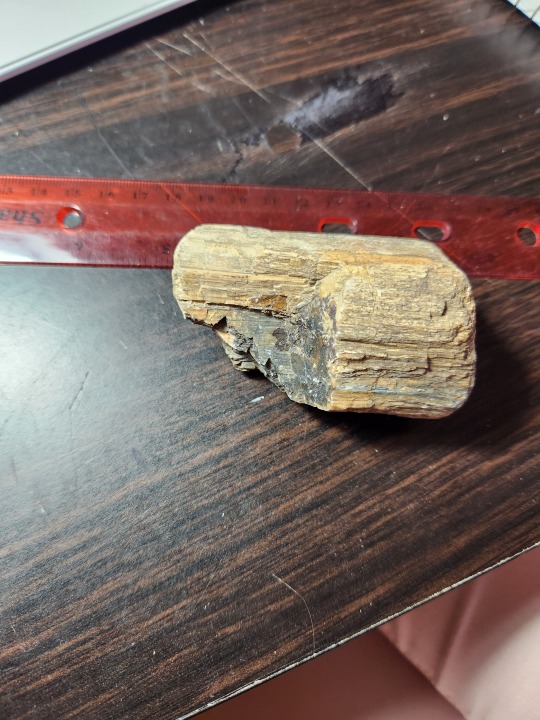
The third photo contains pieces of of wood from the Late Jurassic Swift Formation in northwest central Montana (It's a huge state. I need to be that weirdly specific). These are partially petrified and partially coalified. They still retain some of the original organic material which leaves a black residue on the fingers.
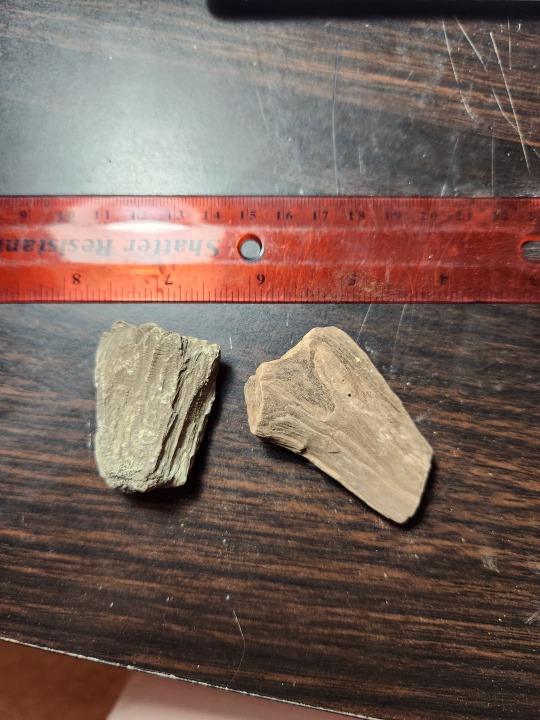

The fourth photograph are pieces that came from the Brushy Basin Member of the Morrison Formation in the San Rafael Swell of Utah. These have been permineralized by quartz.

Finally, the last two show cycads, a type of woody plant that was a prominent part of the Mesozoic woodlands and prairies. These specimens came from the same Salt Wash site as the first two tree specimens. These have also been replaced by chalcedony.
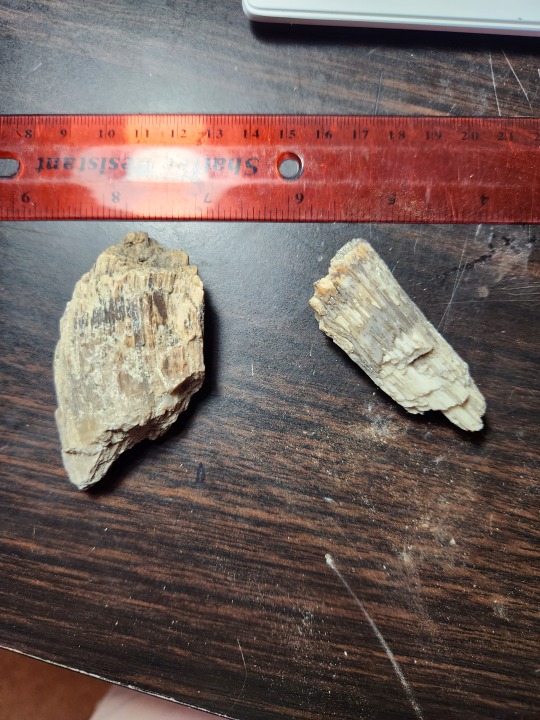

101 notes
·
View notes
Note
Top 5 belongings? I was specifically thinking sentimental things but if you really like your vacuum that’s cool too
LMAO my vacuum is neat but uh
Man this is actually kinda hard, I don't have a lot of Stuff. But I can think of five I'm sure! Without saying "my computer" because look I love my computer and I built it myself but that's still not... quite the same as the below.
Things from my grandmothers. I don't know how to pick but I have inherited some jewelry, plus my maternal grandma gifted me a wool cap once that I adore, and my paternal grandma once made me a kimono and also a purse (she loved to sew). I love these pieces of them that get to carry on their memory while also being practical things I can wear. My dad's mom particularly had a similar sense of taste as I do, so I have some trilobite pendants and cool rocks made into necklaces and brooches that I appreciate a lot.
My plants! Again, I don't really know how to pick. I have a euporbia trigona and also a jade plant that are both descendants of plants I acquired in college (my mom has the originals of both now, she has more space for them, they've gotten huge in their nearly 20 years of life), I have a clone of a plant from work which is fun because pre-covid we were actually all in the same office so it's like a little piece of that time. I have a TON of plants honestly and they are all my babies.
The Stump. In my various rockhounding adventures, probably my best find is a 100-lb entire round section of a fossilized tree that has been replaced with sardonyx and opal. It's like a stump! But a rock! It lives in my backyard by my bird bath and every morning I put peanuts out on it for the scrub jays. It's around 35-40 million years old.
My big ol' glass float that I found on the beach on Saipan. I can't quite figure out how old it is or which country it's from but it's probably around 50-100 years old. Somehow after circling around in the Pacific and acquiring algae and barnacles it wound up on the Old Man beach on Saipan without smashing on the rocks??? Which is insane if you've seen that beach. Anyway part of the memory is packing it up into a box with my dad (who was thankfully visiting at the time that I found it or I don't know what I would have done, he's so smart about using things like styrofoam plates to make a makeshift safety capsule for it) so that it would survive the mail back to the states. This orb has seen a lot, man. It's a miracle that it's still whole.
I mean, I'm kind of obsessed with having been handed a Frozen Pines Motel key last week. What the fuck. "Oh I have something for you too" ARIEL??!?!? She better come next year and actually wear Johnnie's jacket so I can see it in person. Darn you, Denver, being too hot for her to want to put it on.
4 notes
·
View notes
Text
What Are Opalised Fossils and How Do They Form?

In the heart of Australia’s red desert landscapes lies one of the most extraordinary natural wonders—opalised fossils. These breathtaking relics are far more than just beautiful gemstones; they’re prehistoric remains preserved and transformed by nature over millions of years. But what exactly are opalized fossils, and how do they form? Let’s explore the stunning fusion of geology, paleontology, and gemology.
What Are Opalised Fossils?
Opalized fossils are the fossilized remains of ancient organisms—such as marine shells, plants, and even dinosaurs—that have been replaced or encased by precious opal, Australia’s national gemstone. This unique transformation occurs when silica-rich water seeps into cavities left by decaying organic material, gradually forming opal in its place.
These rare treasures capture not only the structure of ancient life forms but also the vibrant play of color that makes opal one of the most visually captivating gems on Earth.
Where Are They Found?

The vast majority of the world’s opalized fossils are found in Australia, particularly in regions such as Coober Pedy opal, Lightning Ridge, and White Cliffs. These areas were once covered by the Great Inland Sea, a prehistoric ocean that existed over 100 million years ago.
As marine life flourished in this ancient sea, their remains settled into sedimentary layers. Over millions of years, geological processes transformed the surrounding environment, replacing some of these remains with opal.
How Do Opalised Fossils Form?
The process of localisation is both slow and complex, requiring specific environmental conditions:
Organic Burial: An organism, such as a mollusk, fish, or plant, dies and is quickly buried under sediment.
Decay and Void Formation: Over time, the organic material decays, leaving behind a cavity or imprint.
Silica-Rich Water Infiltration: Water-carrying dissolved silica seeps into these cavities.
Opal Formation: Under the right pressure and conditions, the silica settles and solidifies into opal, capturing the shape of the original fossil.
This rare geological phenomenon requires just the right mix of time, water, minerals, and luck. That’s why opalized fossils are so rare and prized—both scientifically and commercially.
Types of Opalised Fossils Discovered
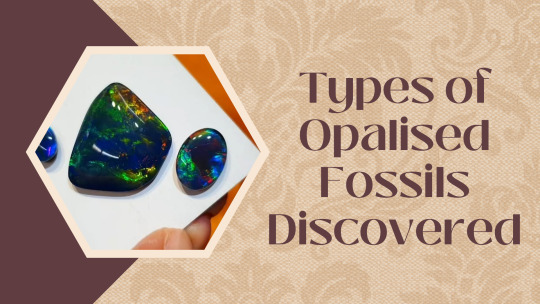
Some of the most incredible opalized fossil discoveries include:
Belemnites (ancient squid-like creatures)
Shells and marine creatures
Prehistoric fish bones
Tooth and jaw fragments
Even opalized dinosaur bones, including parts of species like the Weewarrasaurus—Australia’s very own opal dinosaur!
Each specimen is a one-of-a-kind blend of science and art, often displayed in museums or sold to collectors and gem lovers around the world.
Why Opalised Fossils Are So Valuable
The value of opalized fossils lies not only in their aesthetic beauty but also in their scientific importance. They offer a rare glimpse into ancient ecosystems, while also showcasing nature’s ability to create something stunning from something lost. For gem collectors, opalized fossils represent a perfect union of color, rarity, and history.
Moreover, because they are found almost exclusively in Australia, they have become icons of national pride and a symbol of the country’s rich natural heritage.
You can also watch: Video 12 Opal Fossils
youtube
Conclusion
Opalised fossils are more than just beautiful stones; they are stories from deep time—fossilised echoes of life, preserved in one of nature’s most dazzling minerals. Their formation is a result of remarkable geological processes that occurred over tens of millions of years, making each piece a timeless relic that bridges science, history, and natural art.So, whether you’re a gem enthusiast, a fossil collector, or simply someone fascinated by Earth’s wonders, opalised fossils are truly a marvel worth discovering.
2 notes
·
View notes
Text
*sees an opalized fossil* when will my tissues be replaced with beautiful opalescent stone
5 notes
·
View notes
Note
Saw your ideas/questions, and as usual you’re posing some very interesting thought exercises (like a cross-school Faith build will be required to be multilingual just to read their prayer books)! As for the glint stone, I do think at least one of the mage arm armor sets shows glint stone actually erupting from the flesh? Not sure if the placement was at all meaningful, but it definitely seemed to grow out and Pierce through the skin to erupt.
Sorcerers need more healing options just to counteract the godawful infections that would cause, heck. Maybe they're weirdly cold or something, so it numbs the area a bit? There's a comparison to be found there with the Omens, I think- though the wild life sprouting from sorcerers has probably been somewhat encouraged or even cultivated. The more you study the stars, the more you become one, so the growths are probably a sign of achievement and advancement in your studies.
And I think it's probably deeper than the visible growths- Azur and Lusat seem like they're barely able to move. Maybe they're more like.... petrified wood or opalized fossils?
Petrified wood isn't actually wood. It's the negative space where there used to be wood, which was slowly replaced by minerals over thousands of years. It can happen to other materials too, there's this really cool opalized crab arm thing I saw once.
So maybe what's happening to glintstone sorcerers is something like that? But significantly sped up. Hard to say, but I do like the idea of sorcerers with glintstone nails and stardust in their hair.
2 notes
·
View notes
Note
7, 9, 19 & 20 please! :) (for the ask thing! I hope it’s not too many! :) /gen
not too many!! thank you so much <33
Show us some rocks:
here are some rocks ~

How do you listen to music?
I use Spotify primarily!! it’s expensive but I’m too much of a sucker for the stuff it gives you so it’s fineee. I used to have a record player but it broke :(
What are you currently watching?
oh, too many things. I’m watching Discovery season one for the first time whenever my father is free because he’s a big fan, I’m in the middle of ds9, a rewatch of tos, a few episodes of snw… I kind of just jump around. oh! oh! and I’m rewatching the search for Spock
Share with us a random fact of two?
you HAVE OPENED THE FLOODGATES IM AFRAID
did you know that you can get opalized fossils? so the actual gems form when silica-rich water seeps into cracks in the earth, usually around volcanic activity or near hot springs (that’s why there’s such a big mining industry around the Australian Great Basin area, because of all the sulphurous springs in that part of the country). The water eventually evaporates, leaving deposites of silica that eventually harden and become opal. it can take millions of years and requires really specific conditions, including the presence of specific minerals and the right temperature and pressure. Opalized fossils have undergone a process where their organic matter has degraded and been slowly replaced with opal, preserving the original organism as well as integrating the colours and structure of opal :)
some great pieces of old Victorian slang are the phrases “bitch the pot” meaning “pour the tea”, “tight as a boiled owl” meaning “drunk”, “Cupid’s kettle drums” meaning “breasts” and “got the morbs” meaning “temporary sadness”
the song Me and Julio Down By the Schoolyard tells a story about two boys doing mysterious activities that lead to one of them getting arrested
there is no widely accepted past tense of the word “yeet”
“Sphinx of black quartz, judge my vow” is a cool fucking pangram
the Great Winter of 1708 - 1709 is one of the coldest winters ever recorded in Europe. It affected a whole lot of Europe, including France, the Netherlands, Britain, Germany and Italy. The Thames froze over and in some areas the ground froze to a depth of more than a metre. It’s an example of an extreme weather event from the period known as the Little Ice Age, which lasted from roughly the 14th century to the 19th century. Both people and animals froze to death!! wahoo
anyway theres my daily dose of random shit <3 thanks for the ask!!
4 notes
·
View notes
Text


Petrified wood is a fossil. It forms when plant material is buried by sediment and protected from decay due to oxygen and organisms. Then, groundwater rich in dissolved solids flows through the sediment, replacing the original plant material with silica, calcite, pyrite, or another inorganic material such as opal. The result is a fossil of the original woody material that often exhibits preserved details of the bark, wood, and cellular structures.
3 notes
·
View notes
Text

Opalised Bivalve Fossil
A small fossilised bivalve that over time has been partially replaced with a low grade Potch Opal.
This specimen shows primarily white and translucent potch but also shows a band of black potch.
The origin of this piece is Lightning Ridge in NSW, Australia.
If you ever get the opportunity to I definitely reccomend checking out Lightning ridge. It’s a pretty small place out in the middle of nowhere more or less but you get some impressive opals and other cool finds.
0 notes
Text

How Do Opalised Fossils Form and Why Are They So Rare?
Opalised fossils are ancient remains of plants, shells, or bones that have been replaced by precious opal over millions of years.
1 note
·
View note
Text
Opal Dinosaurs? My favourite topic!
In this video, you will get to know about the fascinating world of opalised fossils, exploring how these rare and beautiful specimens form when prehistoric remains are replaced by opal, creating a unique blend of paleontology and gemology.
0 notes
Photo

Grade A Opalised Petrified Fossil Wood, Miocene, Indonesia | Backlit Photo Highlights Colours & Translucence | 100% Genuine
This exquisite Grade A Opalised Petrified Fossil Wood from the Miocene epoch is a rare and breathtaking example of natural history and geological transformation. Discovered in Mount Cidolog, Pasanggrahan, Sagaranten, Sukabumi Regency, West Java, Indonesia, this fossil represents ancient wood that has undergone opalisation, where the original organic material has been replaced by stunning opal over millions of years. The fossil retains the intricate details of the wood’s grain and texture while showcasing the vibrant colors and translucent effects of opal, as highlighted in the backlit photo provided.
Product Details:
Type: Grade A Opalised Petrified Fossil Wood
Epoch: Miocene (~5 to 23 million years old)
Origin: Mount Cidolog, Pasanggrahan, Sagaranten, Sukabumi Regency, West Java, Indonesia
Size: Average size 50–100mm (Scale cube = 1 cm; see photo for full sizing)
Features: Vibrant opalisation with translucent effects and preserved wood grain patterns
Photo: Taken using a backlight to highlight the colors and translucent qualities of the opal
Genuine Specimen: Includes a Certificate of Authenticity, verifying its origin and age
This Grade A specimen is carefully chosen for its beauty and quality, offering an extraordinary blend of vibrant opalisation and preserved natural textures. The opal’s radiant colors and glowing translucence are especially visible when backlit, making this fossil a stunning display piece. Each piece is unique, with slight variations in size, shape, and coloration, ensuring your fossil is truly one of a kind.
Why Collect Opalised Petrified Wood Fossils?
Opalised petrified wood combines the fascinating biological history of ancient trees with the mesmerizing geological beauty of opal. These fossils are highly sought after for their rarity and aesthetic appeal, offering a glimpse into Earth’s Miocene epoch, when lush forests flourished. The transformation into opal adds a gemstone-like quality, making these fossils prized by collectors and enthusiasts alike.
This fossil is perfect for collectors of natural history, geology, or gemstones. It also makes a unique and thoughtful gift for anyone fascinated by the wonders of Earth’s ancient past.
Order with Confidence:
All of our fossils are 100% genuine and come with a Certificate of Authenticity. The photo provided is an example of the fossil you will receive, ensuring that every piece is hand-selected for its quality and beauty. Each fossil is carefully packaged to preserve its integrity during shipping.
Capture a rare piece of Earth’s history with this Grade A Opalised Petrified Fossil Wood from Indonesia, showcasing vibrant colors and translucent opalisation. Perfect for display, study, or as a treasured addition to any fossil collection!
#opalised#opal#fossil petrified wood#petrified wood#fossilised wood#fossil wood#fossil#fossils#sea fossil#shells
0 notes
Text
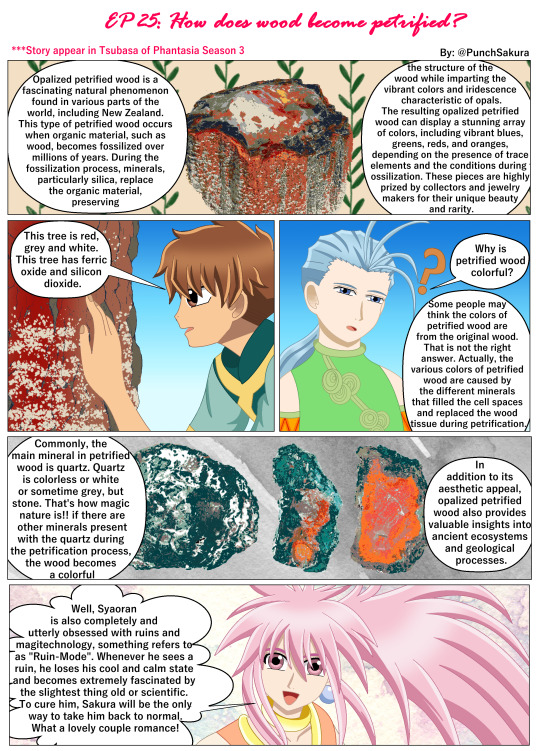
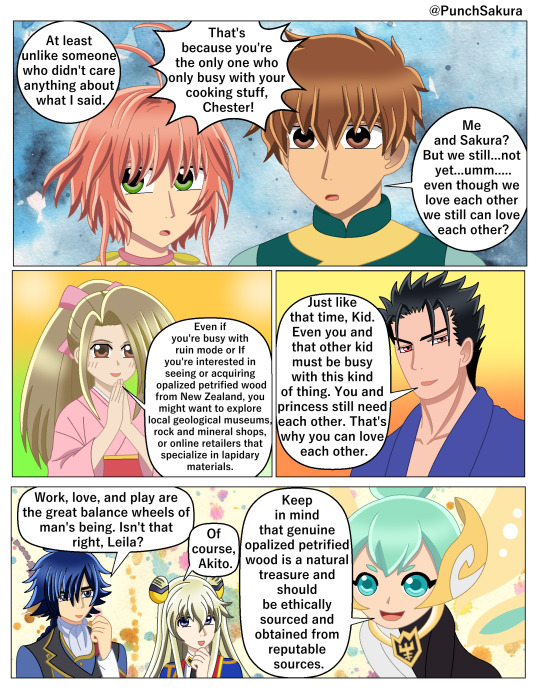
Knowledge 25
youtube
How to identify types of petrified wood?
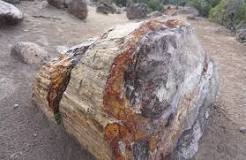
Petrified wood seen at Escalante Petrified Forest State Park. Petrified wood does not have a strict classification system. It is typically identified based on color and mineral composition. Depending on their oxidation state, trace metals, particularly iron, can produce a range of hues in petrified wood.
December 10, 2020Alison Cornford-Matheson
Petrified wood is an amazing stone. Its look can be quite distinct, featuring the same grain, rings, or other patterns found in wood without being made of organic materials. As a result, it’s a popular item for jewelry.
If you’d like to learn more about petrified wood, including what it is, how it’s made, and more, here’s what you need to know.
WHAT IS PETRIFIED WOOD?
Before we dig into what petrified wood is, let’s look at another question that often springs to mind: what does petrified mean? In the simplest terms, petrification is a process where organic matter changes into a stony substance. It’s not unlike ossification in the human body, where cartilage is turned into bone.
For something to be petrified, it needs to have gone through the process of petrification. As a result, petrified wood is simply wood (an organic material) that’s been changed into stone because of that process.
WHAT IS A PETRIFIED TREE?
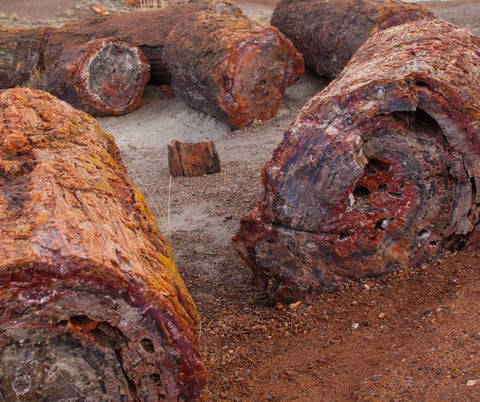
A petrified tree is just petrified wood. Usually, the only difference in those terms is the size of the piece being discussed. If it’s a large sample that still very much resembles a branch, trunk, or another clearly tree-like segment, it may be referred to as a petrified tree.
However, calling a large, tree-like specimen petrified wood isn’t incorrect. Similarly, referring to a smaller sample as a piece of a petrified tree isn’t wrong, either. It usually a matter of semantics.
HOW DOES WOOD BECOME PETRIFIED?
When it comes to what causes petrified wood, the process is relatively straightforward but rarely occurs. Typically, when a plant dies, it decomposes. For wood to petrify, that decomposition process can’t happen.
To end up with petrified wood, a dead tree or branch needs to be buried in the earth, such as under a layer of mud, silt, or even ash from a volcano. Once covered, oxygen can’t reach the organic matter, preventing or substantially slowing traditional decay.
Water with a high mineral content (or mineral-rich mud) also has to be present near the now-buried tree. As the fluid seeps into the wood’s structure through pores or similar openings, the organic form breaks down slowly. As it does, the physical structure is replaced by minerals, leading to petrified wood.
WHAT TYPE OF ROCK IS PETRIFIED WOOD?
In most cases, petrified wood contains silica, usually quartz. If you find a piece of agatized wood, it’s simply petrified wood that features agate, a type of chalcedony (which is actually a form of quartz).
With opalized petrified wood, it’s a bit trickier. While opalized wood can refer to petrified wood that’s made of opal, the term also covers any petrified wood that’s ended up with an opalescent sheen.
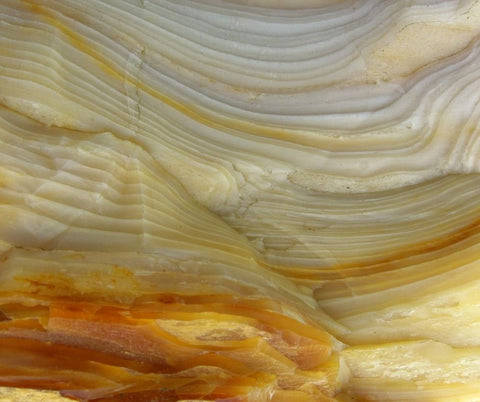
It’s also important to note that, with opalized petrified wood that actually contains opal, it’s usually common opal. Common opal does have a sheen, but it doesn’t have the characteristic play-of-color you typically find in precious opals (the version most frequently used for jewelry). As a result, opalized wood can actually look a lot like chalcedony petrified wood. In some cases, it even takes scientific testing to tell the difference.
However, there are petrified wood samples featuring precious opal. They are incredibly rare and tend to be more valuable than their counterparts.
IS PETRIFIED WOOD A FOSSIL?
Yes, petrified wood is a fossil. The process essentially preserves the structure of the original specimen while replacing the organic material with minerals.
#sakuraswordly#tsubasa of phantasia comic#tsubasa of phantasia knowledge#Tsubasa Li#Chester Burklight#Arche Klein#tsofph Season 3#Dio(top)#mel(top)#dio and mel#akito and leila#tsofph Season 1#princess tsubasa#sakura tsubasa#trc kurogane#Ethos#Suzu Fujibayashi#petrified wood#wood become petrified#opalized petrified wood#Youtube
0 notes